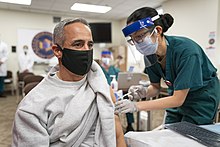

The pandemic of COVID-19 has caught the world on fire! Not in the literal sense of the term, but it’s just plain breathing of SARS-CoV-2 virus that leads to the development of this deadly disease in the human body. Currently, most people across the world are aware of vaccines that fight COVID-19. These vaccines are injected through intramuscular route and not through the nose, although the virus simply enters the body through the nose. Most notable companies manufacturing COVID-19 vaccines are Pfizer and Johnson & Johnson.
Scientists believe that nasal vaccine would be more effective in battling COVID-19. This is because the mucosal lining of the nose will develop immunity against the virus, preventing it from entering the body and attacking the lungs. Recently, iScience journal has reported about how biomedical researchers of the University of Houston have developed a subunit of an intranasal vaccine. This vaccine is quite effective in boosting the immunity of the nose against pathogens inhaled by breathing.
These researchers believe that nasal vaccines are non-invasive, boosting both systemic immunity and the immunity of the mucosal lining of the nose. A large population of subjects can be immunized by nasal vaccines. However, they also highlighted a major drawback of nasal vaccines. Antigens cannot be efficiently delivered by mucosal route of vaccination. Moreover, these vaccines need to include suitable adjuvants that boost the immune system effectively without causing any toxic reaction in the subject’s body.
To solve the drawbacks of nasal vaccines, these researchers worked together with nanoparticle experts at the pharmaceutical college affiliated with the University of Houston, Texas. The team of pharmacists successfully captured the agonist that stimulated interferon genes (STING), which were present within liposomes of cells. Thus, they produced the adjuvant and christened it as NanoSTING. The immune response of the human body was stimulated by the adjuvant. The size of a NanoSTING particle is very small at about 100 nm. Nevertheless, it possesses properties that are completely different from that of a normal adjuvant.
